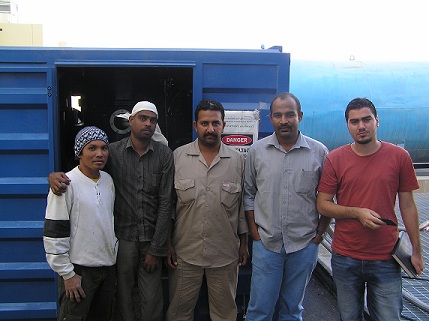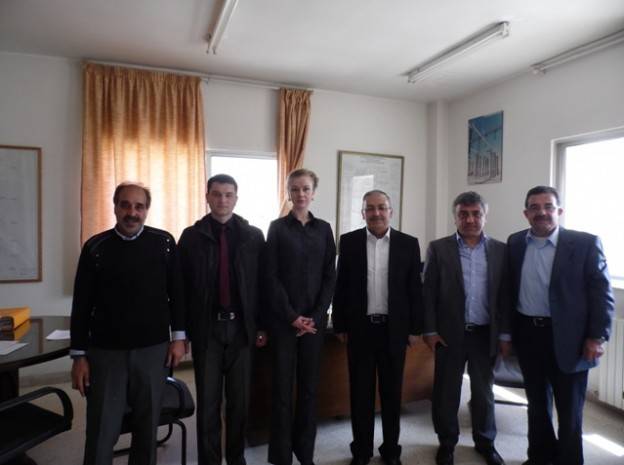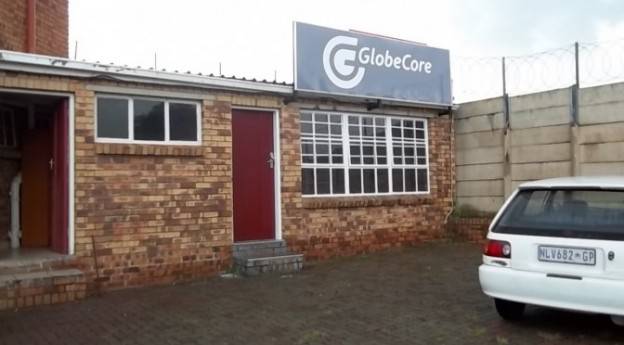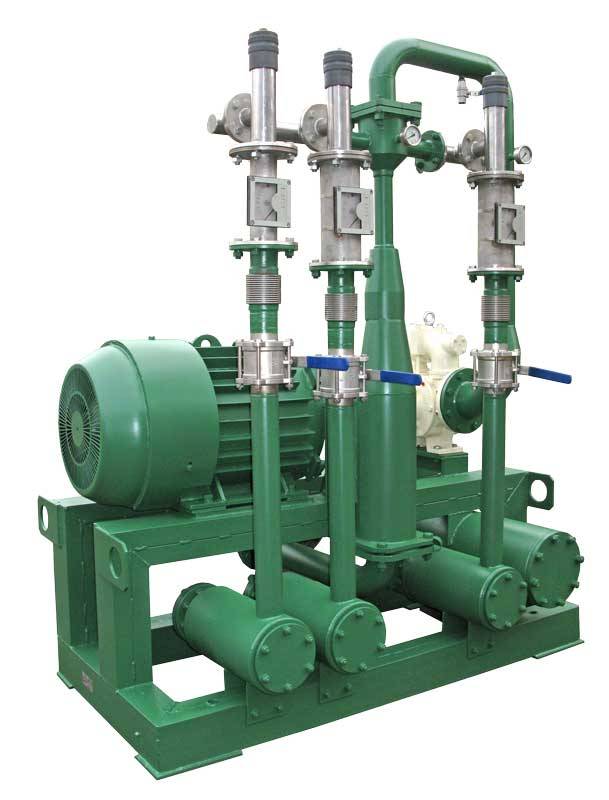
oil treatment plant
This February, GlobeCore commissioned a unit in Saudi Arabia. One of the electric energy companies ordered a CMM-10 transfromer oil processing plant.

oil treatment plant

This February, GlobeCore commissioned a unit in Saudi Arabia. One of the electric energy companies ordered a CMM-10 transfromer oil processing plant.

oil treatment plant

During the first part of the event, GlobeCore’s representative Daria Shadad spoke on equipment used for transformer oil purification and regeneration. Some of the products presented were CMM-R and CMM-4/7. While such equipment is not entirely new to the industry, it is still important, since it allows to extend service life of transformers at the country’s power plants.
The CMM-R attracted special interest, due to its ability to remove acids and decay products from the oil, increasing its oxidation stability and lowering gas solubility.
The second part of the event was dedicated to questions from the audience. The participants were interested in the Fuller’s earth sorbent used in the CMM-R plant. The plant features capability to regenerate sorbent directly in the unit multiple times and process oil continuously without the need to refill the sorbents.

Energy is a key resource in today’s economy. National production development is largely defined by the consumption of energy. The importance of energy resources is emphasized by the fact that over 70% of mineral resources are sources of energy.
The main energy sources today are coal, oil, natural gas, hydropower and nuclear power.
Oil and gas have become the leaders in world energy since the 1960s. In Germany and the UK, for instance, oil and gas account for 55-60% of total energy consumption, while the the US and Japan the number is even higher: 75 – 80%.
Some of the advantages of oil and gas as energy sources are relatively low production cost, waste-free processing with production of various types of fuel and chemicals. However, world deposits of oil and gas are not limitless. They are significantly lower than coal, shale and asphaltic sand. At the same time, the production of oil and gas by far exceeds that of other combustible minerals.
The high level of oil consumption causes the concern that the world supply of oil may be exhausted in the relatively near future. It is commonly accepted that oil is due to run out by the end of the 21st century.
As oil became the main energy source, its political and economic significance has increased. Availability of own oil, the ability to organize export of oil and oil products has allowed some countries many achievements in their economic and social development. At the same time, the fluctuations of the world’s oil prices and the market condition lead to significant changes in the policy of both oil producing countries and those countries with economy based on imported oil.
The world oil prices have been fluctuating in recent years. In the first years after World War II, the price of oil was dictated by the International oil cartel, dominated by the US. The cartel purchased oil from exporters, developing nations, at low price (22 USD per 1 cubic meter in 1970), while selling oil products to importers at relatively high prices. To protect their economic interests, the developing nations created OPEC in 1960. OPEC includes Iraq, Kuwait, Saudi Arabia, Qatar, Venezuela, Indonesia, Libya, Nigeria, Algeria and Ecuador.
Considering a sharp increase of demand in the world market, OPEC increased their pressure on the oil monopolies in 1972-1973 and increased the price four times. The increase lead to unstable oil supply in several industrialized countries and oil shortages.
The West implemented measures to decrease their dependence on foreign oil by increasing their production of own oil and coal, reducing consumption and the use of other energy sources (solar, nuclear and geothermal). These measures caused the world oil price to drop.
A catalyst for hydrotreatment must be highly selective: reactions of C-C bond breaking or saturation of aromatic rings must practically not occur in its presence. It must be highly active in breaking С-S, С-N, С-О bonds and adequately active in reactions of saturation of unsaturated compounds (which form with light destruction or are already present in the raw material, if it is a mix with secondary process products). In the processes of hydrotreatment of various oil fractions and products, any sulfur resistant hydrating catalyst can be used, e.g. combinations of oxides and sulfides of cobalt (or nickel) with oxides or sulfides of molybdenum or tungsten, specifically cobalt (or nickel) molybdate, nickel sulfo tungstates etc.
Some of the catalysts which comply with these requirements are alumina-cobalt-molybdenum (ACM) and alumina-nickel-molybdenum (ANM). In some cases, alumina-nickel-molybdenum silicate (ANMS) is also used.
Hydrotreatment catalysts
|
Weight content, % of active components, minimum |
ACM |
ANM |
ANMS |
|
СоО NiО МоО3 SiO2 Max impurities Fe2О3 Na2O Strength Index on the chopping kg/m |
4.0 – 12.0 – 0.16 0.08 1.1 |
– 4.0 12.0 – 0.16 0.08 1.0 |
– 4.0 12.0 5.0-7.0 0.13 0.20 1.2 |
Catalysts commonly used in the US
|
Weight content, % |
Со-Мо |
Ni-Mo |
Co-Ni-Mo |
Ni-W |
|
СоО |
2-3.5 |
– |
1.25-2.5 |
– |
|
NiО |
– |
3-5.5 |
0.35-2.5 |
5-6 |
|
МоО3 |
9-15 |
13-18.5 |
10-11 |
– |
|
WО3 |
– |
– |
– |
19-20 |
|
Total oxides |
12-18 |
17-22.5 |
12.2-15 |
25 |
|
Weight ratio (СоО+ NiО) МоО3 (WО3) |
0.19-0.35 |
0.21-0.42 |
0.20-0.32 |
0.25-0.32 |
|
Atomic ratio (Co+Ni)Mo(W) |
0.22-0.41 |
0.25-0.5 |
0.24-0.38 |
0.25-0.32 |
All the catalysts are very durable mechanically and remain active for a long duration of time. Not only active component content, but also the ratio of metal in the catalyst is important. In ACM catalyst, the most effective ratio of cobalt to molybdenum is 1:5; it ensures maximum activity in hydrodesulfurization reactions. Such catalyst is highly selective and the reactions of C-C bond hydrocracking or saturation of aromatic rings practically do not occur in its presence. Besides, it is very stable to nuclei, which are usually present in the processed material. Moreover, it is sulfided beforehand, and some data indicate that sulfidation ensures good performance of the catalyst in hydrotreatment systems.
This catalyst is adequately active in reactions of unsaturated compound saturation, C-N and C-O bond breaking and is used in practice in hydrotreatment of all oil fractions and products except heavy petroleum residue. The active components of this catalyst are those, which form octahedral oxidic ions, i.e. СоО, СоМоО4 and “complex”. It has been found that the Со2+ ion is distributed evenly between tetrahedral and octahedral forms. Another widely used hydrotreatment catalyst is ANM (alumina-nickel-molybdenum). In terms of activity it is practically identical to ACM when treating distillates, but is preferable when treating raw materials with increase nitrogen compound and polycyclic aromatic hydrocarbon content. Besides, it si about 25% less expensive than ACM and allow 10-200С temperature reduction when hydrotreating light fractions. However, it quickly loses its initial high activity. The ANMS catalyst, due to addition of silica oxide, is stronger mechanically and thermally, and is somewhat better in hydration activity. However, long term influence of steam reduces its mechanical strength (also holds true for ANM).
For hydrotreatment, the temperature, partial pressure of hydrogen and hydrogen sulfide are the determining factors for maintaining the catalyst in sulfide form. It has been determined that the highest activity is demonstrated by molybdenum disulfide and mixed nickel sulfide (NiS and NiS2). The ANM catalyst requires sulfiding, which is not necessary for ACM. A lot of coke, sulfur and metals precipitate on the catalyst in the process: 7 – 20, 0.5 – 1.5 and 12 – 25% of catalyst weight respectively. It loses activity and the degree of desulfurization drops – it is the normal catalyst aging process. The main indication of catalyst aging is increased sulfur content in treated product. Some other factors which accelerate aging of the catalyst are:
The catalyst is quite stable in oxidation or reduction environments up to 550-600 0С, however, long exposure to the same conditions in the presence of steam may lead to decrease of activity and strength. In this case the active surface of alumina oxide decreases and the volatility of the molybdenum oxide increases somewhat. To maintain catalyst activity in the system, first the temperature is raised gradually, and after reaching the allowable temperature maximum, the catalyst is regenerated or replaced with new. Since catalyst activity drops predominantly due to coke precipitation into its pores, the process of regeneration involves burning the coke. This process requires the hydrotreatment system to be switched to catalyst regeneration mode.
Particle size and catalyst forming is very important in operation of hydrotreatment systems. Of the three types – pelletized, ball and extruded, the latter are considered the best. No more than 5% of the catalyst used today are pelletized.
Forming method and particle size influence on catalyst performance in hydrotreatment.
|
Catalyst |
Grain size, mm |
Equivalent diameter, mm |
System pressure drop, kPa |
Relative activity. |
|
pelletized |
4.8 |
4.76 |
107 |
1.00 |
|
extruded |
3.2 |
3.66 |
109 |
1.16 |
|
pelletized |
3.2 |
3.18 |
111 |
1.24 |
|
extruded |
1.6 |
2.13 |
117 |
1.58 |
|
ball |
1.5 |
1.59 |
123 |
1.82 |
The information above demonstrates feasibility of using extruded catalysts in hydrotreatment. The advantages are especially evident when treating heavy distillates, since catalyst activity is higher than that of pelletized.

Visit our new office: 35 Main Road, Anderbolt Ext 31, Boksburg Gauteng, South Africa.
Tel: +27761054167
Att: Mr. Frank May.

Very few people know that many materials which we consider simply as waste can be actually restored and used for further processing. During an era of high ecological consciousness and need of protection of our planet, it is possible to claim that both above alternatives are much more effective, than such “easy” decisions, as burning of waste.
The GlobeCore company very well understands this situation therefore we found the economic and reliable decision on utilization of any kinds of mineral oils, namely their full cleaning and regeneration.
On April 20 engineers of GlobeCore company held a seminar in Kuwait and Qatar, at the request of our partners “PSC” Ltd, based on present technologies of processing, cleaning and full regeneration of mineral oils. Visitors of seminars were struck by the information about technology which restores properties of the fulfilled oil, to standard new condition. Later few months later installation of regeneration and purification was made and delivered to Middle East. Transformer oil was regenerated and purified.
Oil regeneration and purification plant

LIQUID/FUEL BLENDING SYSTEMS USB
GlobeCore GmbH Liquid/Fuel Blending Systems USB are designed to blend up to five separate liquid
components at rates ranging from 18 m³ to 200 m³ per hour, particularly low-octane gasoline with high-oxygene additives, to prepare multicomponent motor fuel blends. These can include biodiesel blends, bioethanol and other fuels blends.
Modern hydrodynamic stream fuel blending plants have proven themselves to be an economic, accurate and steady solution for high-quality motor fuel blend production with optimal prime cost. In comparison with existing technology of fuel blending in blending vessels, the economy and increase of production profit margin can result in return on investment of 60 % a year. Continue reading
Flow Diagram
USB system is an ideal solution for biodiesel blending, as well as bioethanol blending applications.
The composite fuel produced with this fuel blending system remains stable for long periods of time, due to the highly intensive blending process. The liquids in the blender interact on a molecular level, which results in a stable and homogeneous mix. USB blenders make the process of blending ASTM compliant biodiesel to superior biofuel a lot simpler and a lot more efficient. Continue reading

USB Blending systems are intended for:
fuel saving; octane number increasing; cetane number improvement; blended fuels production; blended bio-gasoline (straight-run +
bioethanol) production; production of winter diesel fuel and arctic gasolines (decreasing of a haze point and point of congelation); activation of heavy fuel (black) oil (processing and averaging of watered heavy fuel oil); low-viscous ship fuel improvement; production of watered heavy fuel oil emulsions; production of furnace oil; crude oil and oily mixtures processing; petroslimes processing;
The Unit can be applied on: oil tank farms, petroleum refineries, mini-refineries, refuel stations, ships, by bunkering companies, experimental departments and labs of different factories and institutes.
Advantages: